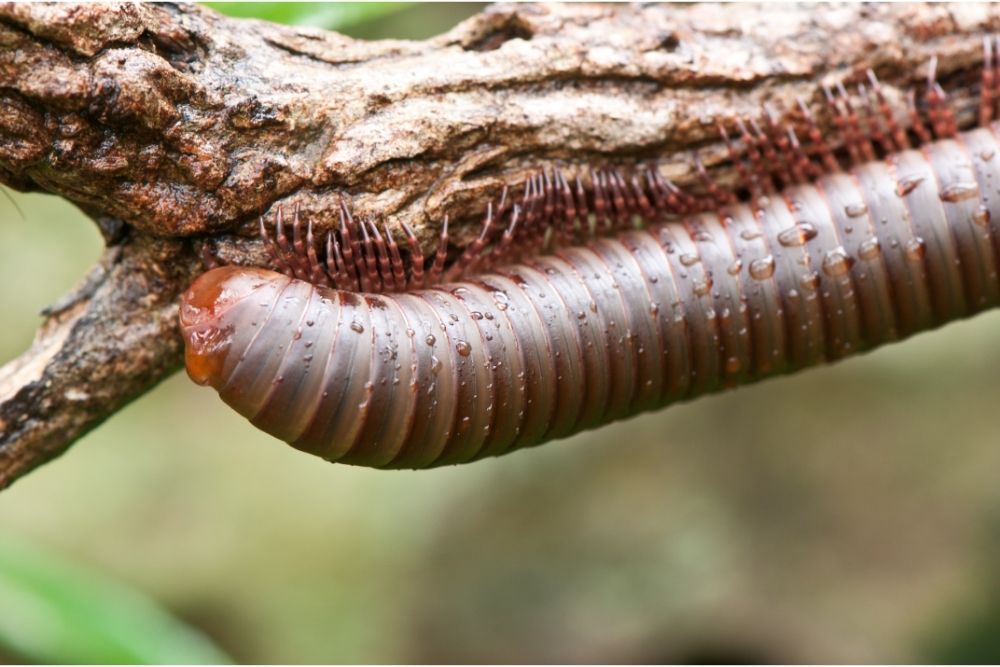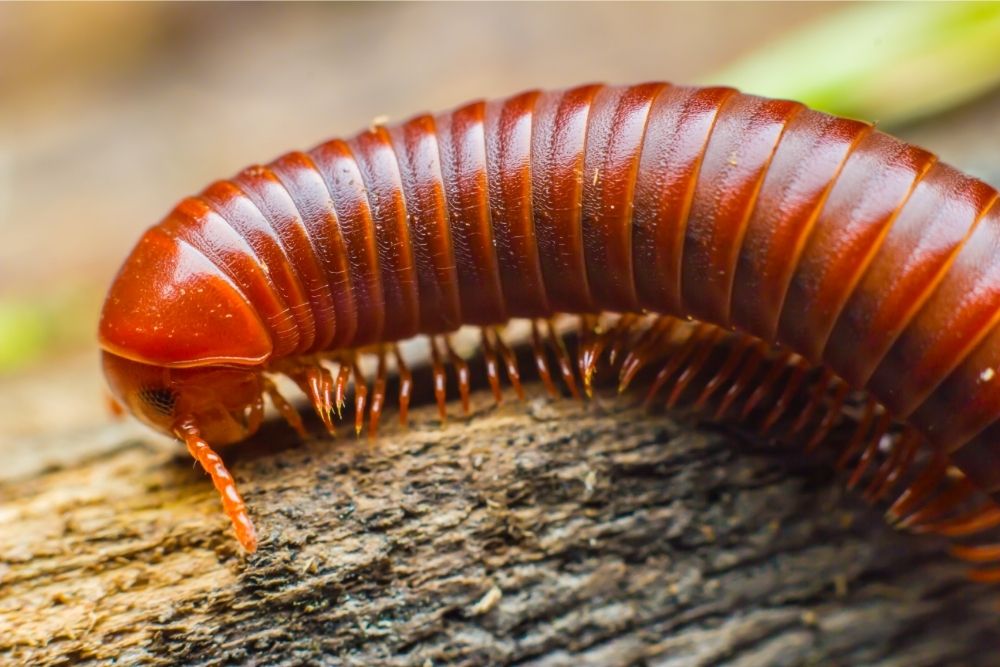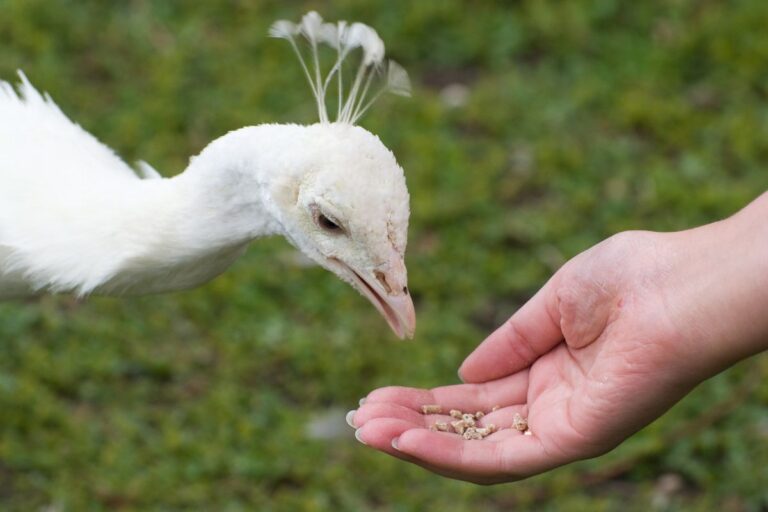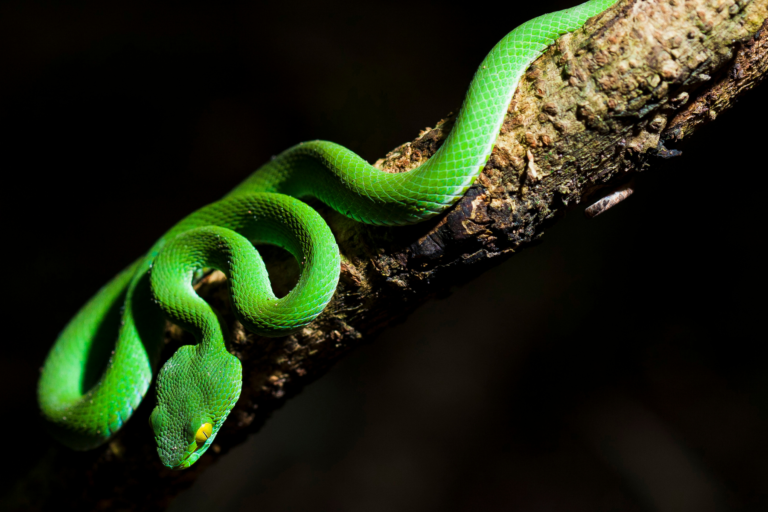How Many Legs Does A Millipede Have?
Last Updated on December 27, 2021 by
Many of us have sat in the garden on a sunny day and watched as the creatures that live there go about their business.
The birds singing, the leaves rustling, and the insects munching on whatever leaf or other animals they may have found.
On those days, we have all seen some strange and exciting creatures, however none match up to the bizarre sight of hundreds of little legs carrying an armored titan of a creepy crawly.
Millipedes are undoubtedly strange creatures, if you had no knowledge of a millipede before it was described to you, you may think it was a weird joke at your expense. But these hardy little travelers are everywhere, bumbling their way through life and hardly ever causing a problem for others.
Yet, their strange look and excess limbs make people question why they would ever need so many legs.
In this article, we seek to answer a question asked since a person ever thought to give millipedes a passing glance: how many legs does a millipede have?
How millipedes came to have so many legs?
To answer this, we have to go back early in Earth’s history, long before the dinosaurs, long even before reptiles and mammals ever existed, some 440 million years ago in the Silurian period. It was during this time that millipedes started to colonize the land, making them one of the oldest land animals to ever exist.
At this point in history, predatory animals had only come to be around 50 to 100 million years before, and so many animals had only begun to develop defense mechanisms shortly after this.
Much of the animals at the time belonged to the arthropod family, which today includes millipedes, insects, spiders, and many more, and this group of animals developed hard, segmented bodies to defend themselves.
Millipedes took this a step further by elongating their body, allowing them to curl into a defensive ball with their hard shell on the outside and soft belly protected on the inside. However, moving such a long body requires legs at each segmentation, thus creating a need for many, many legs.
This design was so successful that it has remained virtually unchanged for almost 400 million years. In fact, it has aided millipedes in not only being one of the most successful but, at one point, they became the largest land invertebrates to ever walk the earth.
During the Carboniferous period – sometimes called the age of bugs – a giant millipede roamed the earth called Arthropleura, that could grow as long as 2.5 meters (8 ft), a size in invertebrates that hasn’t been matched since.
How many legs does a millipede have?
So, we know why millipedes have so many legs, but how many do they have.
The reason we answered the why first is that it affects the how, as how long and how segmented their armor gets depends on the number of legs.
Some millipedes can have as little as 24, while others can have as many as 600 to 700, with the record being 750.
As a matter of fact, most millipedes and millipede species have fewer than 100 legs. However, so far, there have been no recorded cases of any millipede having 1000 legs, making its name a misnomer that science has refused to correct.
Another thing that affects the number of legs a millipede has is its age. When a millipede hatches from its egg, they only have a few pairs of legs. This is due directly to baby millipedes only having a few segmentations at that time.

As they grow, they go through a process called molting, where a millipede’s body will begin to get too big for the body it’s in, and it will shed its hard exoskeleton, revealing a soft body underneath that can expand to the appropriate size.
Each time a millipede molts, it gains a new segmentation on its body and, as such, two new pairs of legs along with it. Depending on the millipede species, molting can take place until the young millipede reaches adulthood, or it can continue to molt long after adulthood, making it difficult to rely on this to count millipede legs unless you are a specialist on each species.
Differences between Millipedes and Centipedes
Many people see these two arthropods and recognize the similarities, however, most of us can tell immediately that they are two very different animals.
The problem is they have fallen on a similar body plan and stuck to it, making it seem like they should be the same. Yet, a millipede and a centipede are two very different creatures, with very different lifestyles.
The big difference between these two is their diet. Millipedes are detritivores, which means they feed on dead or decomposing plant matter, whereas Centipedes are carnivores, feeding on other animals.
In fact, this big difference affects a lot of the smaller differences as well. Centipede’s bodies are flat and flexible, this allows them to get into any crevice or hiding place where prey might hide. Their legs stick out to the side of their body, making their legs longer and allowing them to move incredibly quickly.
On the other hand, Millipede’s bodies are inflexible and hard, making them perfect for defense. Their legs are short, and their entire body is cylindrical, which allows them to roll their body into a tight ball that protects them from predators.
Finally, their legs are also short, because they don’t need to move quickly to hunt anything, they can focus solely on their own defense.
Final thoughts
Millipedes have a great number of legs that form an integral part of their body and, though we may never know how many they truly have, it is nice to have an interesting and ancient creature still scuttling around our gardens.
Due to their harmless nature and interesting appearance, I actually quite enjoy having them in the garden, picking at the leaves, and I hope I keep seeing them and their hundreds of legs for many years to come.







